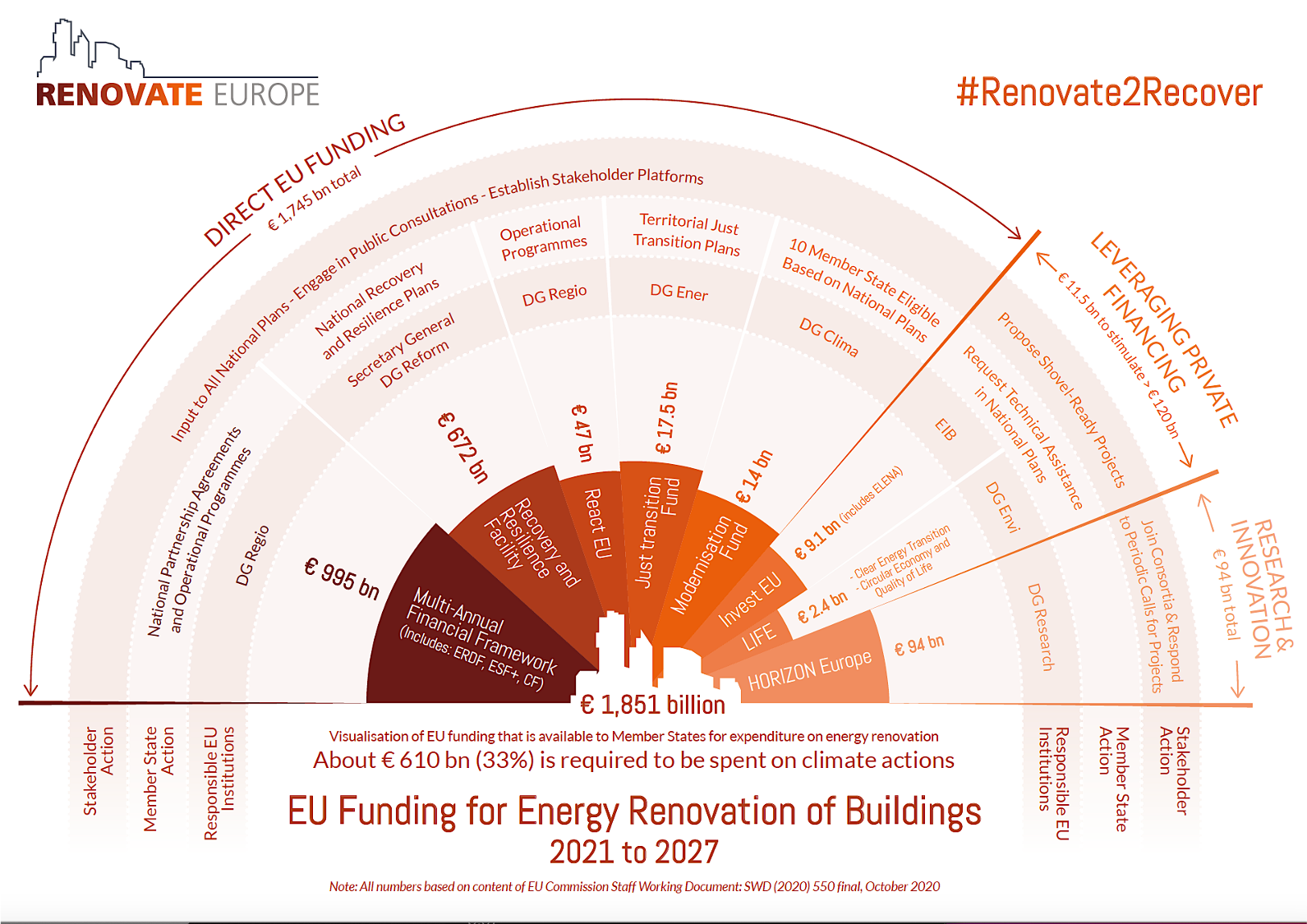This decade must be a decade of building renovation. To meet the new European climate target of a 55% emissions reduction by 2030, our buildings must go further faster, reducing emissions by 60%.
But we are at an almost standing start. It is a well-worn statistic that only 1% of European buildings undergo energy renovations each year. It’s less well known that renovations currently save very little energy — on average just 9% in homes and 16% in commercial buildings. Deep renovations that attain energy savings of 60% or more occur in a tiny 0.2%-0.3% of the stock. Without increasing the rate of deep renovation, we need to raise the general renovation rate by 10 to 15 times to decarbonise the stock.
These European statistics mask national variations. Countries in central and eastern Europe have achieved some of the highest renovation rates, particularly for homes. Even so, these higher rates result largely from lighter renovations — deep renovations of homes happen at half of the European average rate. The challenge for these countries is to push not only for more, but for more ambitious renovations.
Responding to this challenge of massively increasing both the rate and depth of renovation, the European Commission announced it will introduce mandatory minimum energy performance standards (MEPS) into the Energy Performance of Buildings Directive this year as part of its renovation wave strategy.
What are MEPS?
MEPS require existing buildings to meet a minimum performance standard by a given date or at a chosen trigger point in the building lifecycle. By setting a standard, or a trajectory of rising standards, MEPS can drive the desired depth of renovation. By setting out which buildings must be improved by when, they can also boost the renovation rate.
When introduced, MEPS are embedded in a framework of financial and practical support for building owners and occupiers undertaking renovations, ensuring the standard is both effective and fair.
The minimum standards approach is not entirely new in European buildings policy. Standards already feature in a number of forms — for new buildings, we have the nearly-zero-energy buildings standard and, for major renovations, we have minimum performance standards.
What is the impact of MEPS?
Evidence from existing examples of national MEPS indicates that they can be a powerful tool to deliver the significant, multiple benefits of renovation.
These standards tackle the worst performing buildings first. In doing so, the most wasteful, energy-intensive buildings and the homes of the energy poor — who disproportionately live in the worst performing homes — move to the front of the queue.
The Netherlands has seen perhaps the greatest impact from this policy tool. The government’s agreement with the social housing sector to reach an ambitious energy performance certificate (EPC) B in 2020 is on track to be met this year, 2021. This success, covering 30% of Dutch homes, illustrates the potential for MEPS and the surrounding framework to significantly improve housing for the most vulnerable. In doing so, these standards deliver health and productivity benefits and reduce energy poverty, which is particularly high in central and south eastern European countries.
In eastern Europe, where owner-occupied housing and multi-family housing in towns and cities dominate the residential building stock, MEPS can overcome barriers to renovation. Multi‑stakeholder collaboration and consent, for example, has hindered works to date. A standard applying to all building units, underpinned by practical and financial support, can help align numerous stakeholders and overcome impediments.
A second standard in the Netherlands requires all offices to meet EPC C by 2023. Despite only having been introduced in 2018, it has already led leading banks to align their lending strategies to promote compliance and to encourage building owners to go further to achieve higher energy ratings.
The importance of this early action cannot be overstated. The best strategy we have to deliver economic recovery and jobs post-COVID is to spur renovation early in this decade. A MEPS announced in the early 2020s, as the Commission proposes, can do just this.
The potential in the eastern European region is greater than any other. A recent Joint Research Centre report found that countries in this region — specifically Poland, the Czech Republic and Romania — offered the highest value renovation potential for economic expenditure. Regionally tailored renovation driven by a smartly designed MEPS could be the centre piece of an effective economic recovery strategy.
The way forward – piecing together the puzzle
MEPS are only one piece of the puzzle. The standards must be coupled with extended technical and practical support schemes like the Czech New Green Savings Programme. MEPS are reliant on effective programmes but they also support these programmes, increasing their impact and efficiency. To this end, the European Commission clarified the existing and new financial and technical support available for building renovation, including mechanisms targeted specifically for the central and eastern Europe region. (Infographic below by Renovate Europe).
Tasked with designing a locally relevant MEPS, embedded in strengthened support frameworks, national building sector stakeholders can deliver maximum benefits to each region.

A version of this article originally appeared on C4E.
The European Climate Foundation, in cooperation with Chance for Buildings and supported by the Regulatory Assistance Project, is planning a series of roundtables to discuss MEPS in several central and eastern European countries. Stay tuned for your national workshop.

